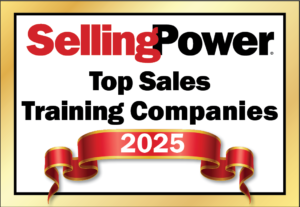To Keep Your Demonstrations Customer-Focused, Use This Checklist
A general demonstration is strictly a gamble. Showing your system’s features in a general sense is asking the prospect to translate general features into specific benefits. Selling is too competitive to run such unnecessary risks.
To run an effective demonstration, begin with the prospect’s interests. Then customize your demonstration to fit each prospect’s precise interests. Don’t try to show off all your product’s features.
How To Customize Your Demonstration For Each Prospect
Start by asking yourself: “Who are the people you need to sell? What are they looking to accomplish? What are they using now? What do they like best/least about their present system? What opportunities exist for your company? Who is your competition? What were the important issues to each prospect?”
Rank and prioritize their top three issues. Create an important issues matrix for committee decisions. Rank the importance of each person’s vote.
What communications tools will help you deliver your company’s message? Will you use videotapes, 35mm slides, overhead transparencies to get your message across?
Conducting The Customer- Focused Demonstration
Begin your customer-focused demonstration with a few welcoming remarks. Make the necessary introductions of your service or support people.
Next, provide a brief overview of the demonstration. (Tell them what they will see.) Summarize the prospect’s key interests and goals. Type their goals and distribute, or use a pedestal chart. Verify that these goals are what they want to accomplish. This is critical if you are to demonstrate a solution they will be interested in. Be sure to check what’s changed since your last meeting.
Once you’ve confirmed your prospect’s goals, start your demo by “showing-off” the system. Use a system flow chart if it’s complicated. A picture is really worth a thousand words. Then “dramatize” (act out) a few operations (transactions or inquiries). This should allow the prospect to see how easy your system is to operate.
Explain the system’s key components. Start at a logical point and work in an orderly (around-the-clock) fashion. Discuss the VALUE of only those features that will be important to this prospect. Don’t clutter up the prospect’s mind with all the little details that you learned at your last product training. The prospect won’t understand or care.
Gain the prospect’s agreement as you proceed. Don’t spend 40 minutes with a “show and tell” and not know if you’re getting through to a prospect. Ask if prospects understand and if they like what you’re showing them.
Use the prospect’s format when possible. This gets the prospect to actually “visualize” your solution in his or her office. It also shows you’ve put time into customizing each prospect’s demo.
Compare a prospect’s present system with your solution. Highlight the present system’s weaknesses and your solution’s strengths. Use a pedestal chart or type them.
Demonstrate specific product features that provide the key benefits important to the prospect. Tie these features back to her interests. Show the “value” of the feature, not the feature alone. Get the prospect actively involved by touching or operating the equipment when possible. Use many “trial closes” along the way. This will make your final close much easier.
Make your key features a reason to buy. Unless they take you far off track, answer any questions as they occur. Prospects usually are asking questions for a reason. When you put them off, you run the risk of irritating them. If a question comes at an inconvenient moment, write it on your pedestal chart and answer it later.
Conclude your demo by summarizing the results of your system or solution. Appeal to prospects’ buying motives. Compare the cost of keeping their present systems to return on investment they will see with your system.
Present your system’s proposal or review it again with the prospect. Now ask for the order. Close by asking if your company system or solution will help the company reach its goal. Then let your prospect answer, don’t be intimidated by the silence. If you’ve done an effective job of responding to his needs and interests, your prospect will now decide if you get the order. If you’ve followed this format for a customer-focused demonstration to get a qualified prospect, you’ll likely get the order.
Product Demonstration Check List
A. Selecting The Most Appropriate Demonstration Site
Your office
One of your customers’ offices
The prospect’s office
B. The Equipment (System) To Be Demonstrated
What is the configuration?
Pre-Demo Run (Testing the system)
Needed software, features, supplies, and accessories
Customer’s forms
C. Additional Resources Needed
Visual aids (overheads, videotape)
Testimonial letters
Support or service people
D. Who Will Operate The Equipment?
Salesperson
Customer support person
User’s personnel
Has the operator rehearsed the demo?
E. Professionalism
Demo site clean, orderly, with no interruptions
Office conduct (Did you let your associates know customers are expected?)
Refreshments (coffee, soft drinks ready)
Is your team’s appearance professional? — attire, attitude, image
Do you know your competition?
Can you discuss the prospect’s present system?
Can you compare your system to theirs?
Get our eNewsletter
Get the latest sales leadership insight, strategies, and best practices delivered weekly to your inbox.
Sign up NOW →